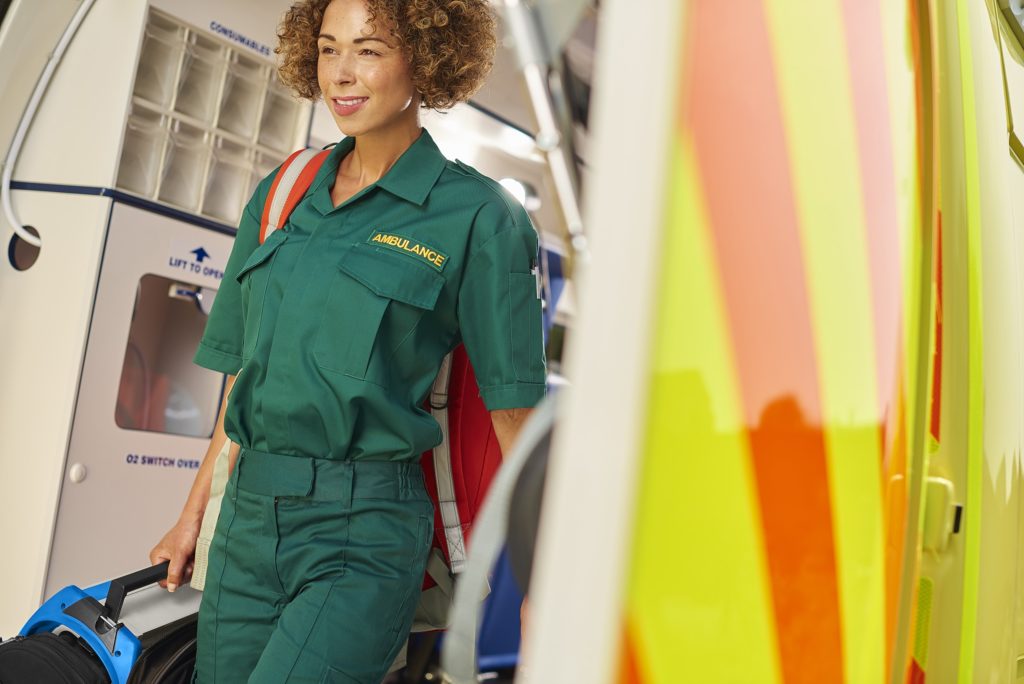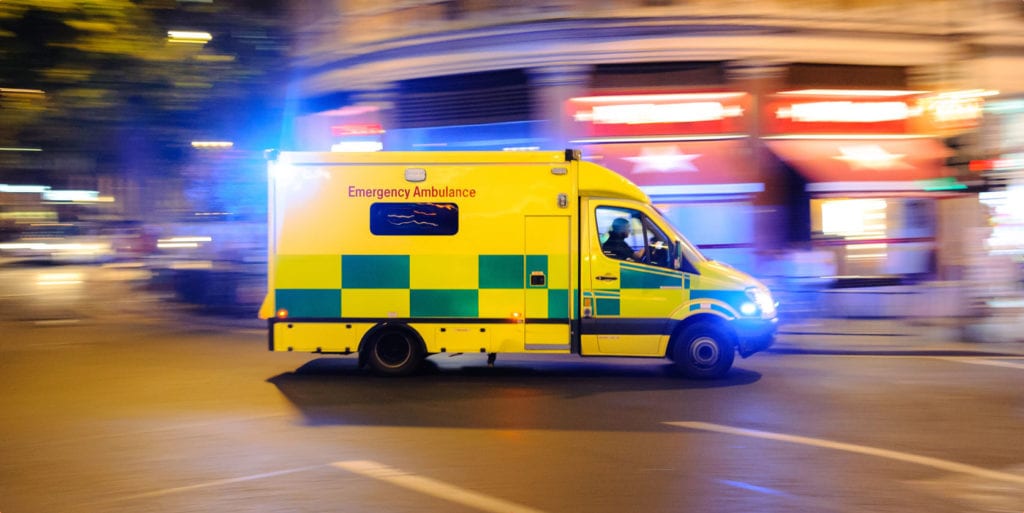
The Paramedic Stroke Mimic Telemedicine Project was initially established to explore the use of videoconferencing technology to support registered paramedics from the East of England Ambulance Service NHS Trust (EEAST) in their pre-hospital assessment of suspected stroke mimic patients. The aim of the project was to explore if telemedicine could be used to prevent Emergency Department (ED) admission of stroke mimic patients.
The initial Paramedic Stroke Mimic Telemedicine Project ran as a feasibility project and was operational Monday – Friday 9am – 4.30pm; commencing on 1st October 2018 – July 2019. The aim was to assess 50 patients using the telemedicine platform to assess feasibility over an anticipated 6-month period (whichever achieved first).
The overall projects aims were to:
- Inform feasibility of telemedicine usage in the pre-hospital setting for stroke or Transient Ischaemic Attack (TIA) patients
- Determine possible impact on outcome and stroke mimic rates
- Gather information about the patient experience
In this feasibility phase, a total of 12 paramedics had access, via the Visionable app on an iPhone or iPad, to one of the Stroke Consultants at Ipswich Hospital.
Shortly after a two-day training workshop, the paramedics were all supplied with either an iPad Mini 4 and SIM card (latter supplied by EEAST) with the Visionable App downloaded or an iPhone 7 with the dedicated telephone number to contact the Stroke Consultant. Telemedicine platform training was undertaken as part of the Study Day and all iPads tested and working and the Project Manager’s contact details shared. The paramedics were texted at the beginning of each week to inform them of which Stroke Consultant was available to them for advice.
The Stroke Consultants used the stroke telemedicine carts to connect with the paramedics as the telemedicine carts are more easily accessible on the Stroke Unit and in ED. We also trained an additional 12 paramedics who were to be supported by 3 Stroke Consultants at Norfolk & Norwich Hospital – but this cohort of the project never became established due to delays related to information governance requirements at the hospital Trust.

Challenges
There were a number of challenges to the project:
- Lack of paramedics with telemedicine access – one of the key issues that became immediately evident was that we did not have enough paramedics available with access to the telemedicine platform to assess the potential 50 patients. 12 paramedics over a wide area – given their varying shift patterns, sickness and that 4 of the paramedics were based on the same vehicle – resulted in a small number of stroke patients being reached.
- Matching resources – combined with the small number of paramedics, the ambulance service was not able to direct these paramedics to stroke patients. There was no apparent simple solution for the call handlers to be able to ensure that potential stroke mimic patients contacting the ambulance service to the ‘stroke paramedics’. Despite many attempts and requests to address this with the relevant Area Clinical Leads, this did not appear to translate well in practice.
Ambulance service communication & support – the paramedics and their Area Clinical Leads and managers involved with the project were excellent and very helpful, but there did appear to be a lack of awareness and engagement within the ambulance Trust itself.
During this time, the Stroke Consultants were still reporting that many stroke mimics were being referred to the ED, the relatively small number of 12 paramedics would clearly have little impact on these figures and it became obvious relatively quickly that we needed to further extend the project and recruit further paramedics.
Solution
Following a review by Lord Carter, the NHS has already agreed that a primary target for the ambulance service is to reduce avoidable conveyance. Reducing conveyance benefits the patient and the system as well as indirect benefits on traffic and wider society.
A more recent publication by the Oxford AHSN highlighted the need for pre-hospital links with Stroke Consultants, suggesting Trusts “consider enhanced pre-hospital communication with stroke consultants to reduce unnecessary conveyance to hospitals for patients with a stroke mimic or TIA” (2020: 10)
Impact
The median teleconsultation length was 37 minutes. We only experienced technical issues with connectivity on one occasion – and the patient very kindly let the paramedics use their WiFi network. This is using the current App approach which we estimate that this will be less of an issue as the project develops.
Patient feedback
- I was treated with great care & speed. Once at the hospital I was treated immediately and admitted to Shotley Ward
- Very helpful visit – offered me reassurance. Felt much more relaxed after their help. The paramedic explained very fully (Issues with iPad – used telephone)
- I was very impressed with how quick everything was, the paramedics were absolutely fantastic
- Excellent piece of kit – saved time for all concerned – very
- I think this is a very good idea, it saves time for the consultant and better for the patient. The ambulance crew were extremely helpful
Summary
This is an innovative project that has attracted wider national interest with a clear need for the use of technology enhanced care to support the enhanced virtual triage of stroke mimic patients. Anecdotally the App is easy to use and the patient response has been very positive, with a 87% ED admission avoidance to date.
Some barriers have been overcome – some initial resistance from EEAST IT Directorate, linked to their large internal workload, which has been overcome with additional support from the telemedicine company. Additional finances have been provided by the Eastern AHSN, for which we are very grateful, in supporting backfill costs for the paramedic’s release for the Study Day. We were also supported with funding from the Eastern Academic Health Science Network as we were part of their Digital Pioneer Programme.
Lynda Sibson Project Manager
Lynda.sibson@nhs.net
To view the full report, please click here.
Case study accurate as of October 2020.
To learn more about how Visionable can help your team, please email us at

